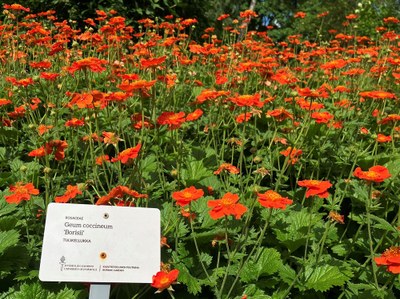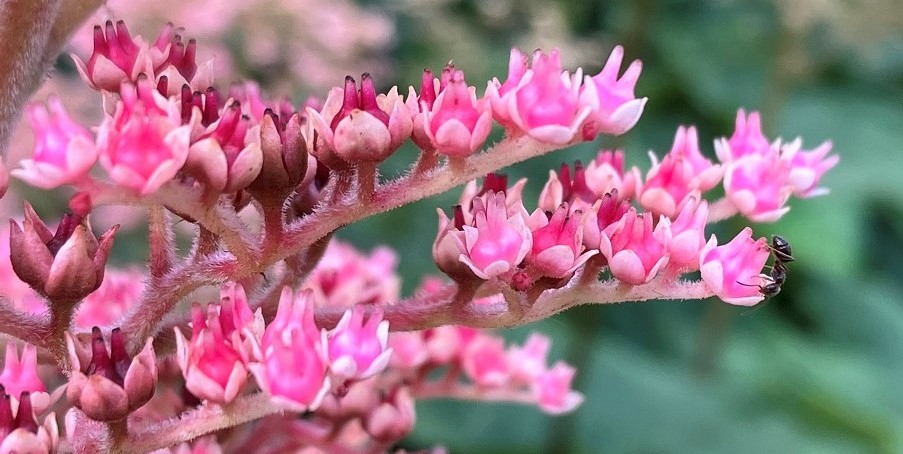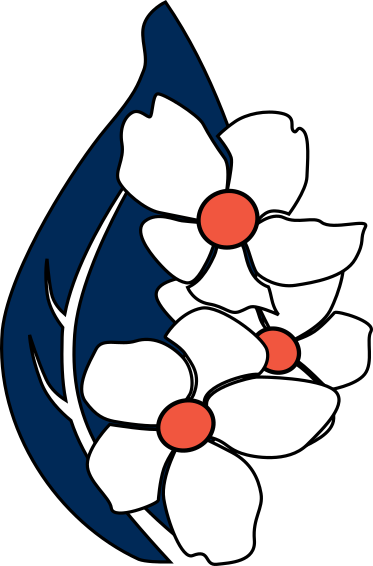Plant collections of the JYU Botanical Garden
The JYU Botanical Garden differs from the other botanic collections in Finland due to its rich historic layers and structure. The plant collections are located on three different campuses, each with its own characteristics. Moreover, the plant collections have not been gathered to the areas solely on the grounds of species taxonomy or plant geography. Instead, each site presents the plant collections from various perspectives, including the cultural environment and time of construction.
This website provides additional information about the collections of the Botanical Garden. To see more information on the illustrated plants, place the cursor on the image. If you are on a mobile device, select the image for preview by holding your finger or stylus on the image for a moment.
Old plant populations are nurtured on Seminaarinmäki
The park area in Seminaarinmäki was formed when Finland’s first Teacher Seminary moved to this area from Lounaispuisto park in the 1880s. The whole area is a significant tribute to the history of the Finnish school garden ideology. The knowledge of gardening and the potential for a vegetable garden in food production spread with Seminary students throughout Finland. The Seminary garden set an important example for other Finnish school gardens and gardening in general. The renovation and restoration of the park area on Seminaarinmäki began in 2012. The design work by the landscaping firm Maisemasuunnittelu Hemgård was based on detailed studies of the history, landscape and environment. The renovation began from the oldest part of the park and advanced later to Aalto Park.
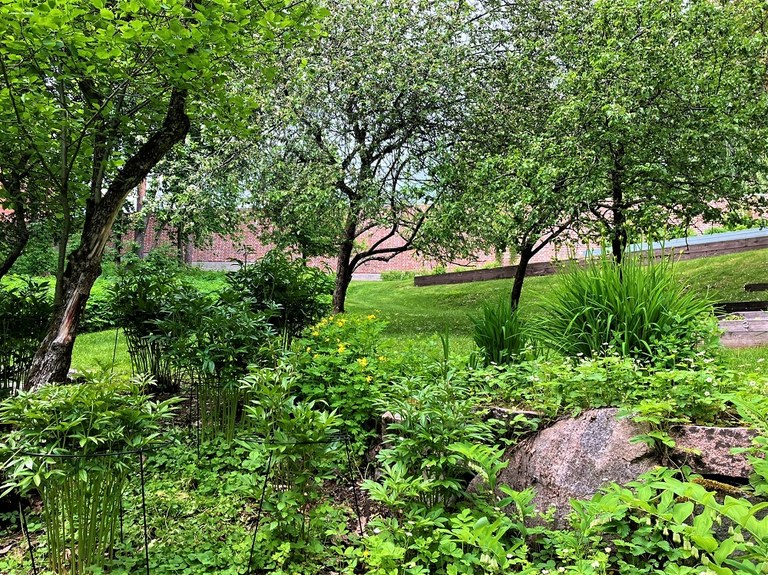
Seminaarinmäki is on the Finnish National Board of Antiquities list of nationally significant built cultural environments. As an integral part of the campus, the area designed by Alvar Aalto is one of the masterpieces of modern Finnish architecture, and it is certified by Docomomo, an association for the research and preservation of international modern architecture. Furthermore, the site was the first in Finland to receive the European Heritage Label, which was awarded by the European Commission in 2022).
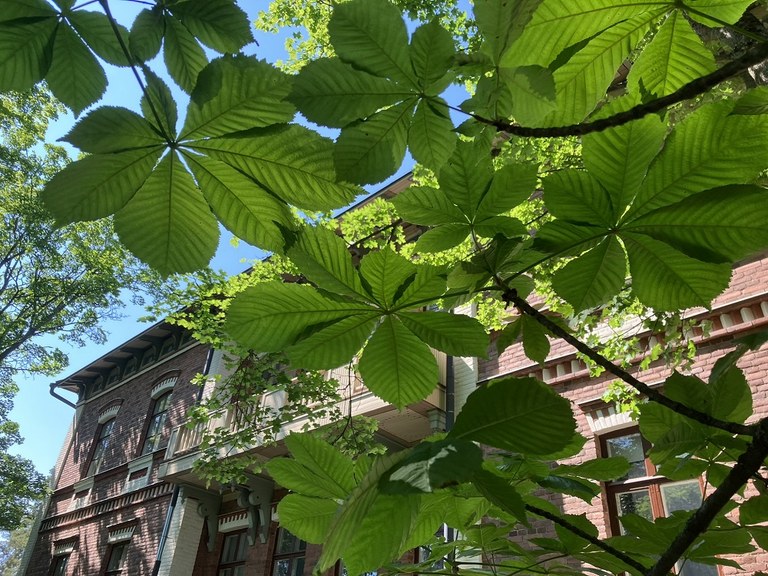
The plant collections of Seminaarinmäki have preserved especially the old plant populations of the area. The traditional species of Seminaarinmäki Park include those planted in the garden before 1934. The local vegetation is composed mostly of these traditional species. Seminaarinmäki Park had plenty of trees originally as well and there are now plenty of rowans, bird cherries, birches, and Norway maples growing there, some of which have spread there from the natural surroundings.
Originally, Seminaarinmäki Park also had a large number of berry bushes, apple trees and shrub roses. Other traditional species and older trees in the area include the small-leaved linden (Tilia cordata), wych elm, ash, Siberian fir, blue spruce, larch, Siberian pine, and Scots pine. A considerable part of the park consists of the ridge woods located at the northern and southern hillsides of the area, which have special natural values and play a great role for the green belt of the City of Jyväskylä at large (read more: Kehä Vihreä / Green Loop). The old park is also known as a habitat of flying squirrels.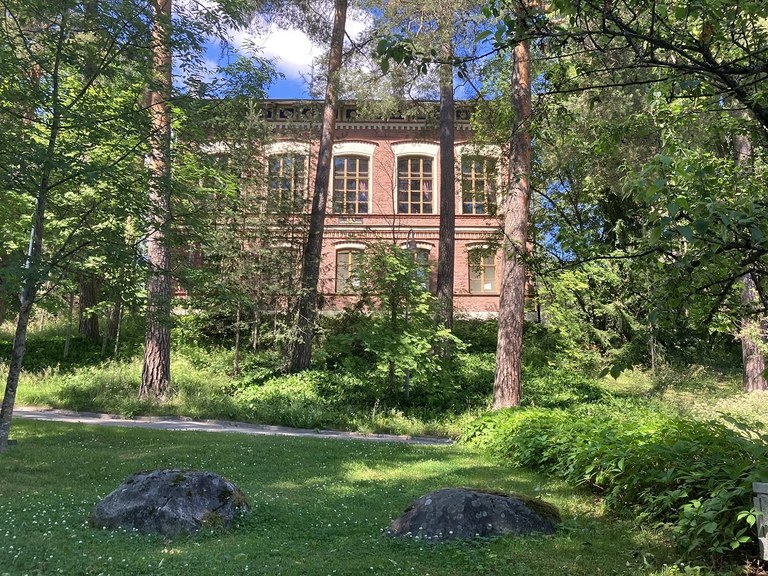
There are also several trees named after important persons or things. The oldest and most significant ones are the Cygnaeus Oak on the north side of the gateway to the University, which was planted in 1910 in memory of Uno Cygnaeus, the founder and first director of the Seminary, 100 years after his birth, and the Seminary Spruce growing in the middle of the lane leading to the University Main Building. The spruce was planted in 1937 as a tribute to the Jyväskylä Teacher Seminary.

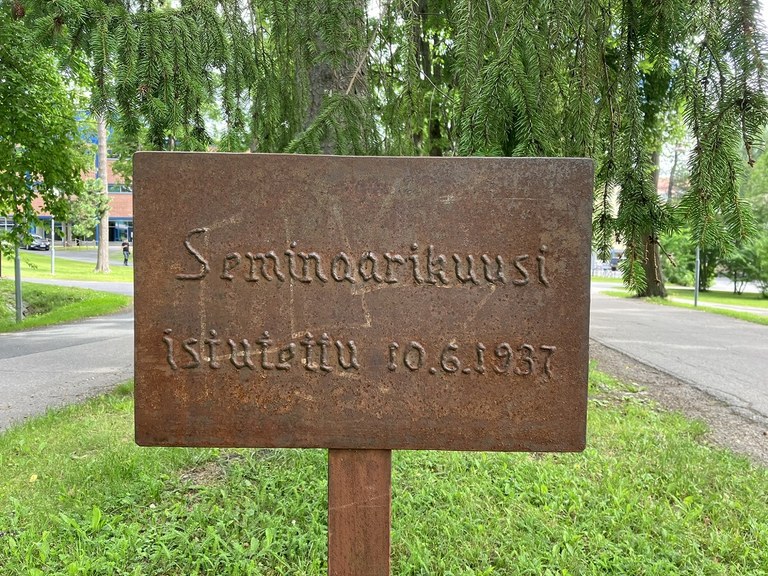
The garden of Villa Rana (1905), the building designed by Yrjö Blomstedt, also included the Seminary’s greenhouse and a cultivated space for useful plants. The area alongside Seminaarinkatu has been preserved, sheltered by the wall built in the 1950s and maintaining its own undisturbed character throughout various campus renovations over the years. The greenhouse was removed in the 1960s after gardening was cut as a subject of instruction. Nowadays the large horticulture beds on the upper slope hold a collection of perennials and herbs received as a donation from Kuokkalan Kartano (a local manor house).
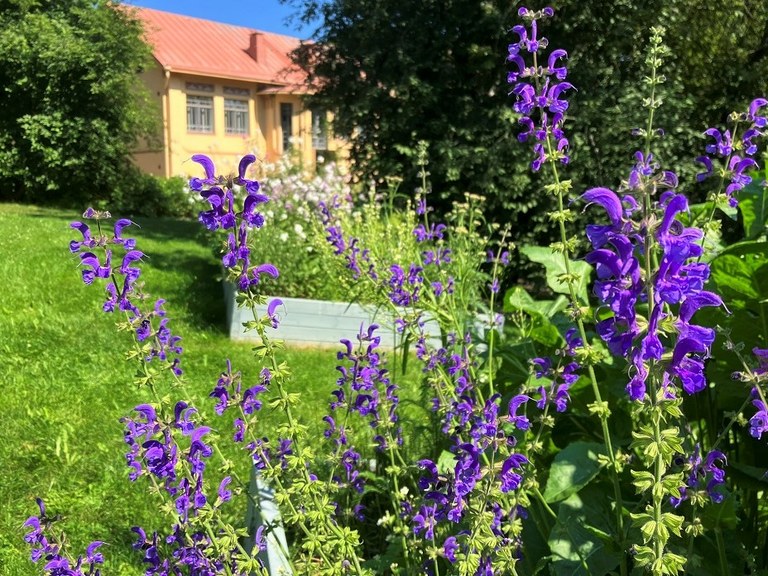
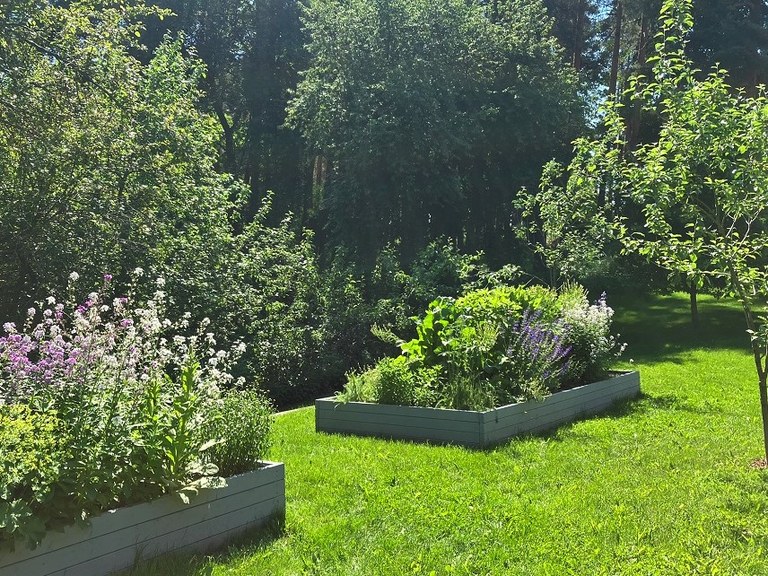
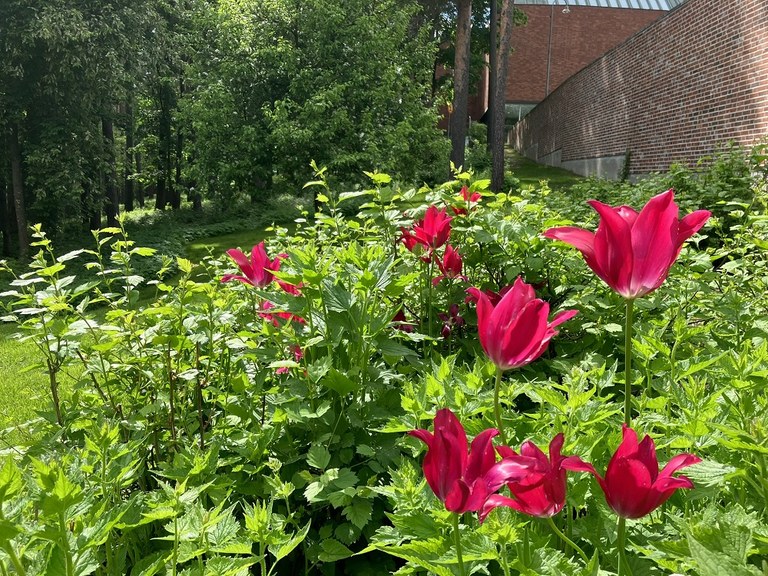
The plants growing on the hillside include traditional perennials, old elms, bird cherries, purple bird cherries (Prunus padus), apple trees, and berry bushes. Decaying wood on the lower slope provides a habitat for rare beetle species. The Villa Rana garden is an atmospheric place, at its best when the old apple trees and bird cherries are blossoming. 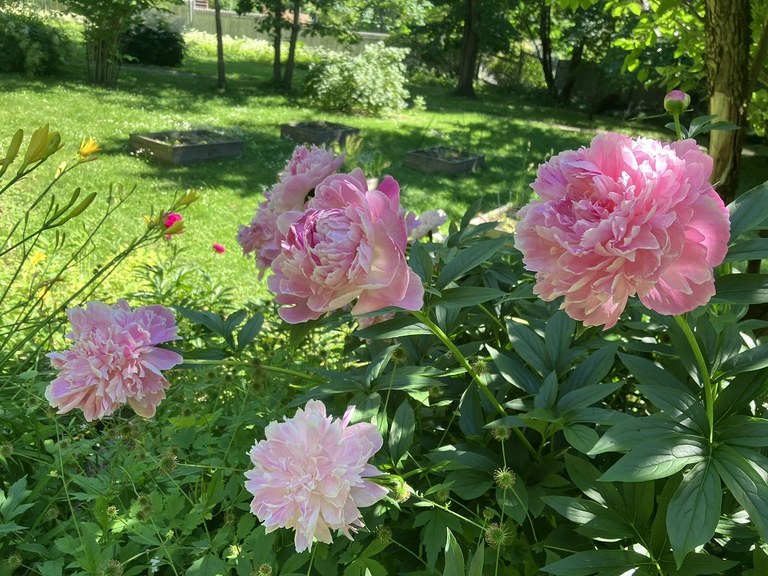
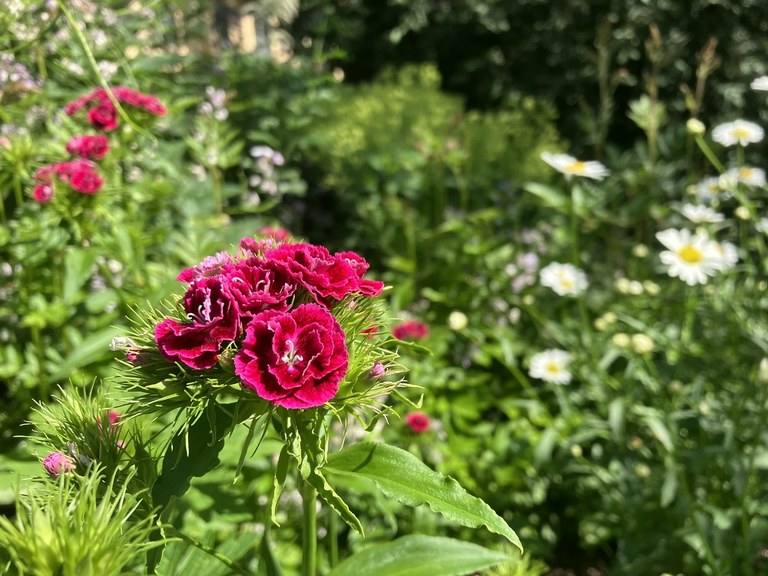
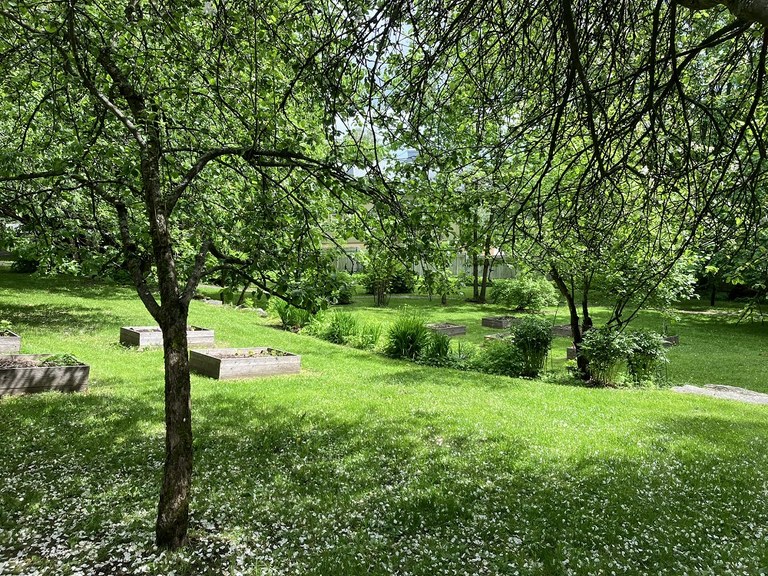
Perennials or herbaceous plants can also be found especially from the planting bed in front of the Gardener’s House (Building J) and at its front yard.
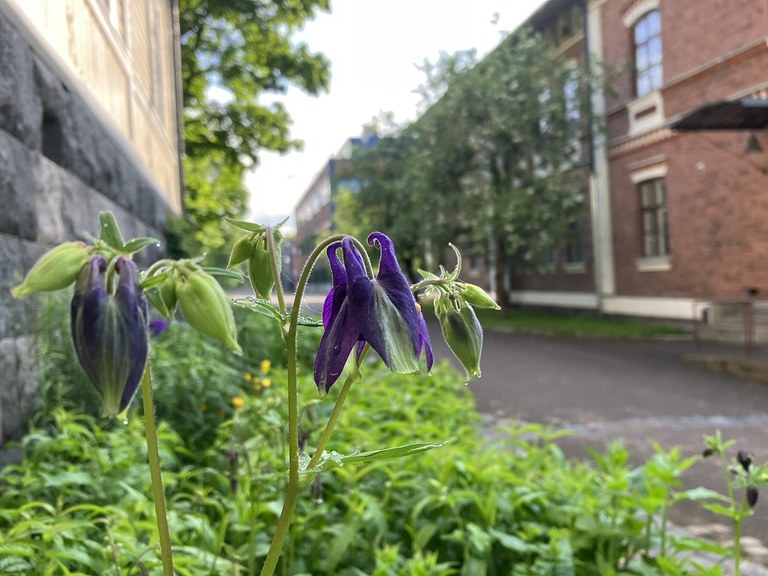
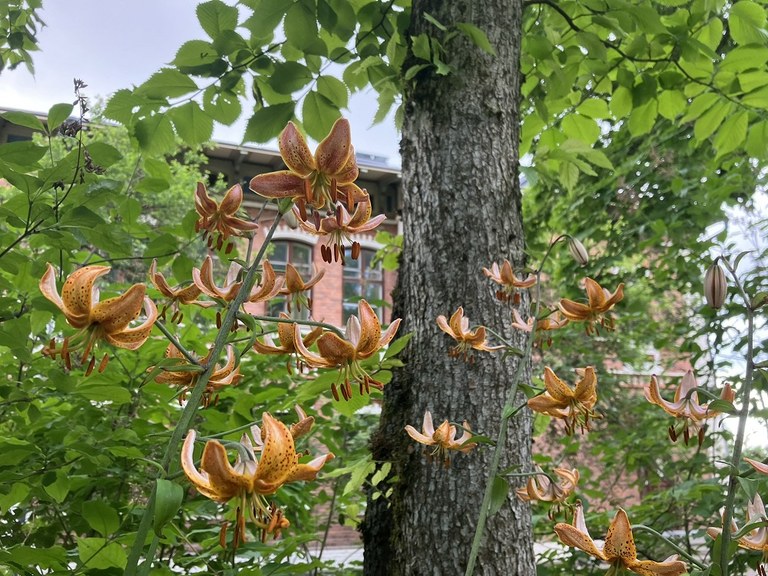

The official plant of the JYU Botanical Garden is the Chinese crab apple (Malus prunifolia) ‘Oppio’. This Chinese crab apple population is a population unique to the University and thus named after the place of its discovery. The ‘Oppio’ stock trees grow at the north-western side of the Oppio building, and they were planted there in the 1930s. Read more about the ‘Oppio’ population.

The expansion of the Seminaarinmäki campus in the 1970s included some typical plantings of that time, adding to the species originating from the days of the Teacher Seminary. This is why we can now find, for example, plenty of Tartarian honeysuckle, serviceberry, Spiraea, shrub rose, shiny cotoneaster as well as perennials such as daylilies and hostas, in the vicinity of the buildings designed by Arto Sipinen.
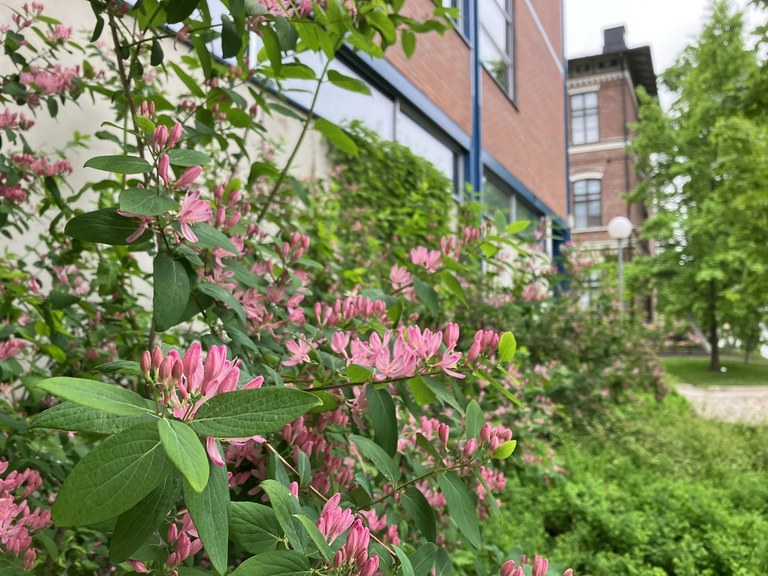
Aalto Park, Alvar Aalto and Onni Savonlahti 1952–1971
To Southwest from the old Seminaarinmäki park, Aalto Park was constructed on the former fields of the Mattila farmhouse from the 1950s to the 1970s, adjacent to the additional buildings designed by Alvar Aalto. The park consists of greenspaces surrounding the sports ground and Ceremony Square behind the University Main Building. The garden plans for the sports field area were made collaboratively by Alvar Aalto’s office and garden architect Onni Savonlahti.
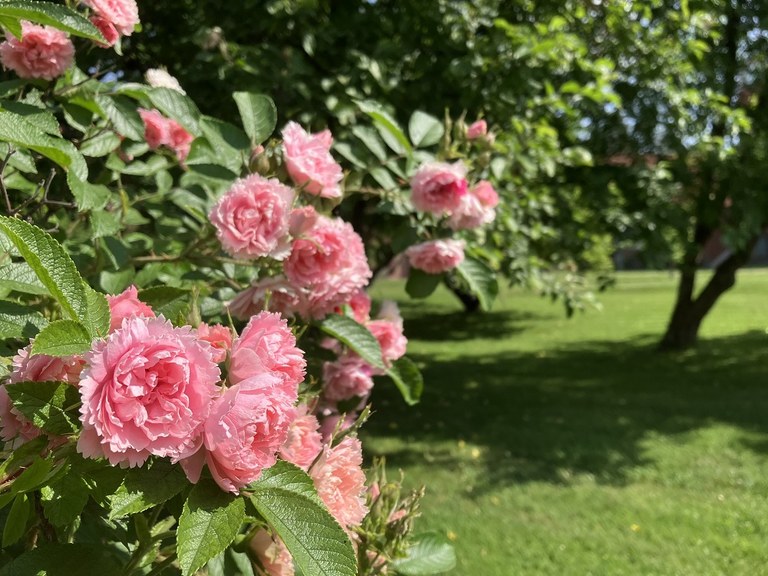
The vegetation of the park area consists of about 70 plant species and varieties typical of the 1950s and 1960s. In the background, tall pines grow along the ridge, and their position as the most prominent landscaping element was highlighted by low buildings and small-sized plant species. In Aalto’s designs, the significance of the nature of Central Finland was emphasised as a landscaping premise for the College.
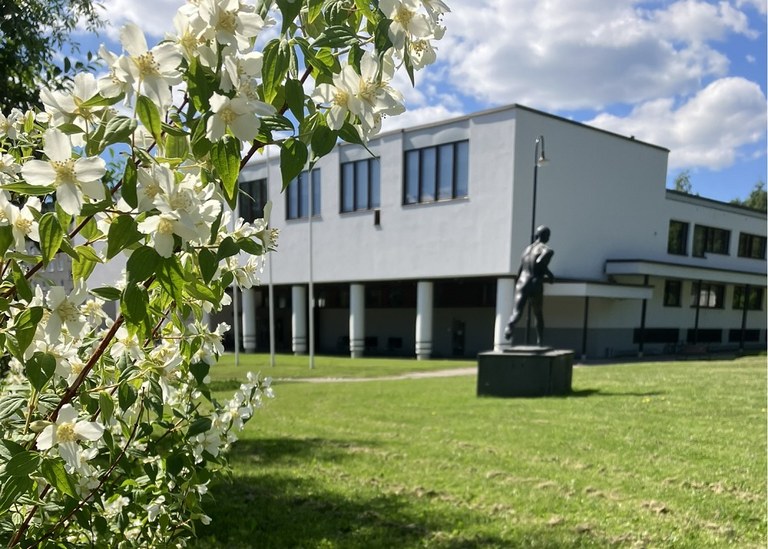
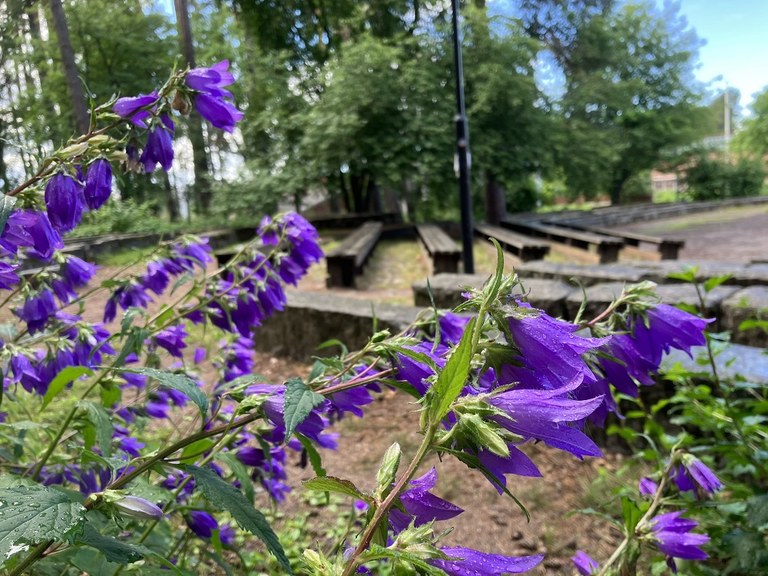
The basic plants of the park include crab apple trees and large bushes, such as serviceberry, lilac and wayfarers. The park area is at its best when the original ‘John Downie’ paradise apple trees (Malus Prunifolia) and different lilac species and varieties bloom at the beginning of summer. The park also features more special, cell-duplicated lilacs, such as the ‘Beauty of Moscow’ and ‘Pamyat o S.M. Kirove’, obtained from a former research station in Laukaa.

The plentiful shrub roses of Aalto Park offer a beautiful and rich spectrum of colours for the mid-summer as well. Shrub roses were given a prominent role among the plants of Aalto Park so as to emphasise the connection to the old Seminaarinmäki Park. Growing beside the wall leading north from the University Main Building, there are sweetbriar roses (Rosa rubiginosa) that spread a strong apple-like scent, which can be detected in damp weather all along the paths of Aalto Park.
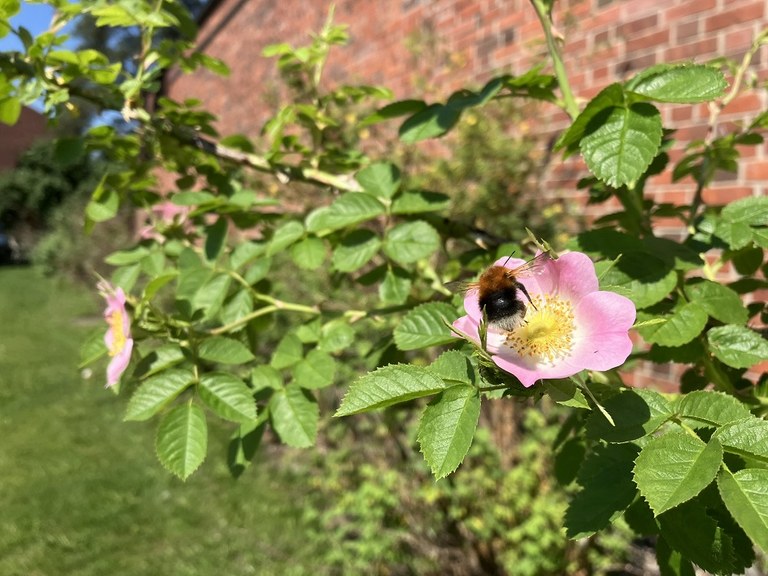
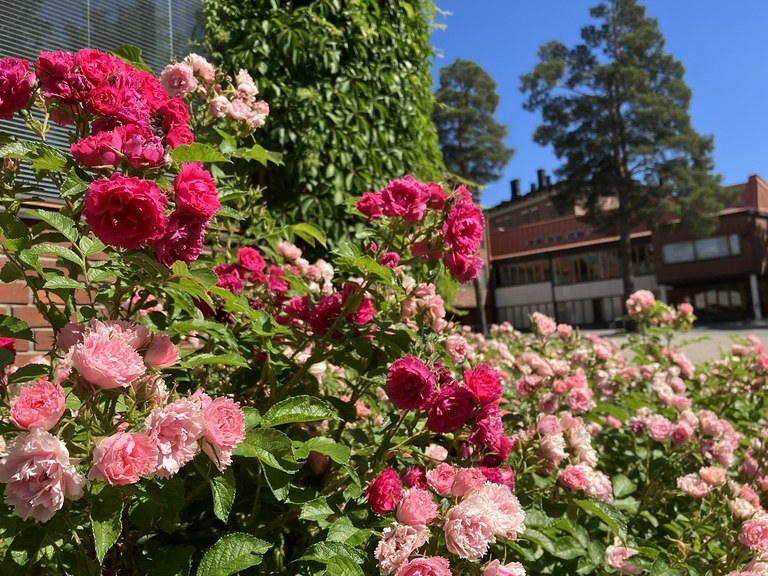
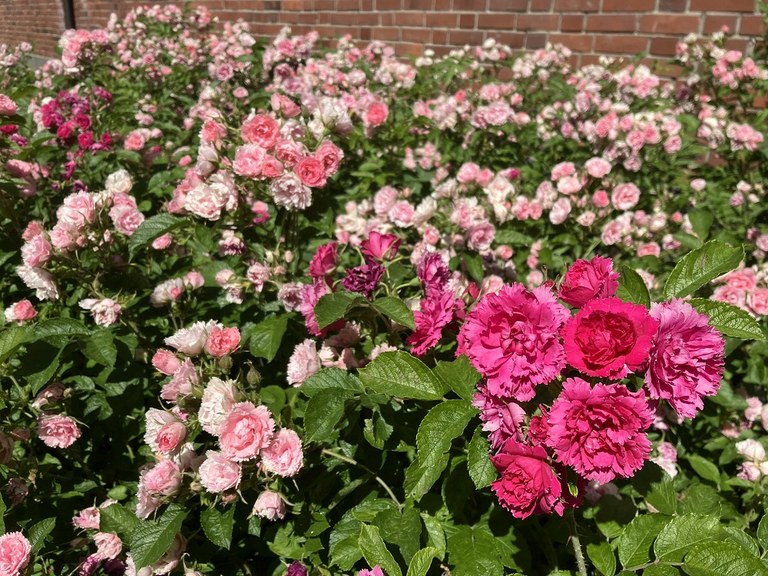
According to the original plan, the purpose was to plant only white-flowered species in the park. However, the range of selected species was later widened. In addition to apple trees, other deciduous trees of the park include maples, rowans and elms. The mountain pine is the park’s only foreign conifer species. Near the buildings, there are low-growing bushes and various shrub roses, and at the northwest side of the University Main Building (C) a wide variety of cherry trees have been planted to replace the earlier, frost-bitten ones. The area also features lawn gradings typical of Aalto’s outdoor designs.
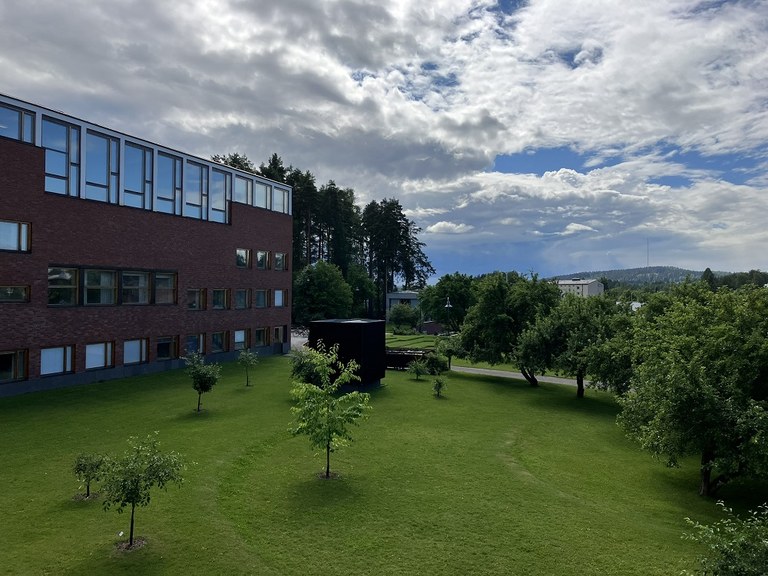
At the west end, towards the Liikunta building, there are large and showy perennial zones with abundant blossoms throughout the growing season.
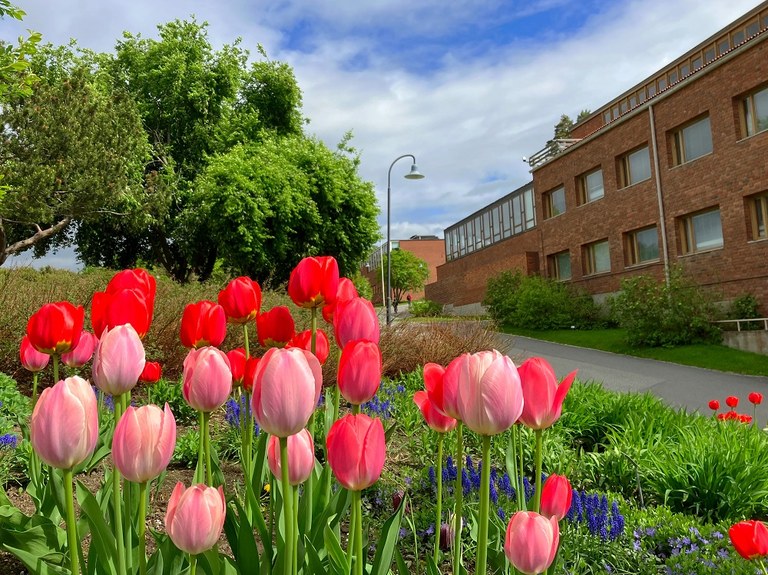
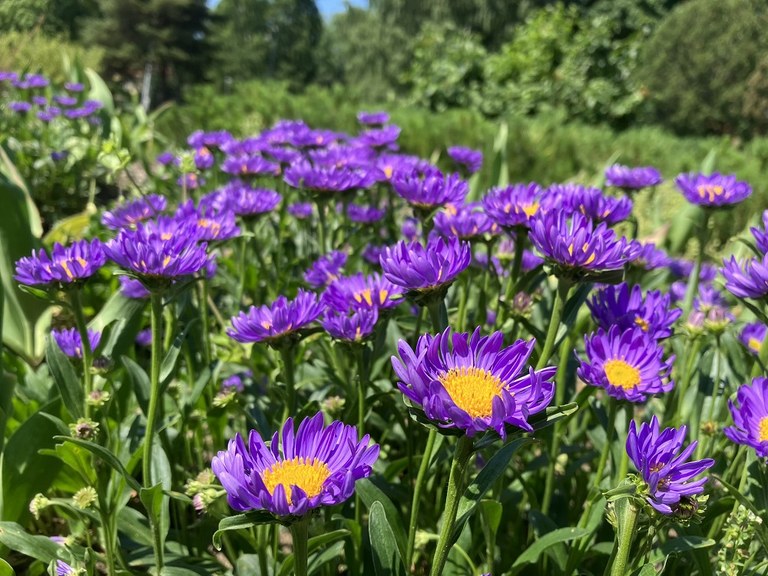
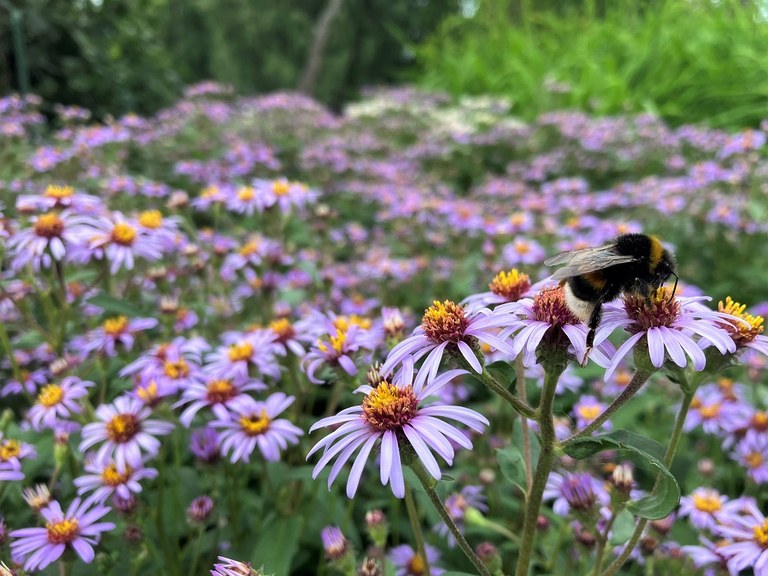
For the sports ground, Aalto had an unusual solution. He wanted trees to be planted in the field as well. The pathways are an essential element of Aalto Park, and they form a winding network. Deviating from the original plan, the path network had to be reduced soon after its completion, as students tended to make their own shortcuts through the park.
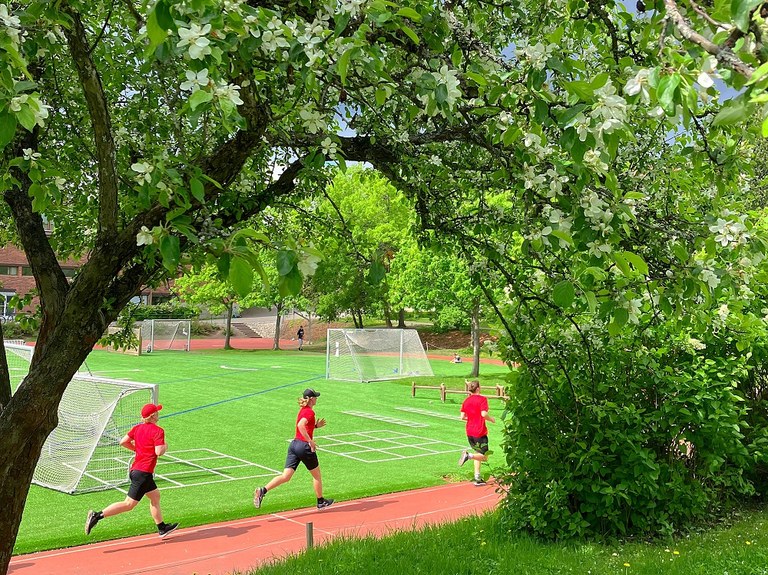
Mattilanniemi features an extensive collections of perennials and conifers
In vegetation and style, the park area in Mattilanniemi represents urban construction of the 1980s. The area has been used for researching the adaptation of plants to an urban environment in Central Finland, so it has also served as an experimental park. The park has achieved its overall form gradually in layers, keeping pace with the buildings in the area. Originally, the area comprised a low pasture and lakeshore meadow. In the park’s southern part designed by landscape architect Juhani Rajala, planting started in 1984 when the campus buildings of the second construction phase were completed. The northern part closer to the city centre was designed by Irmeli Kurttila, drawing partly on Rajala’s greenspace plans. Most plantings were made at the beginning of the 1990s.
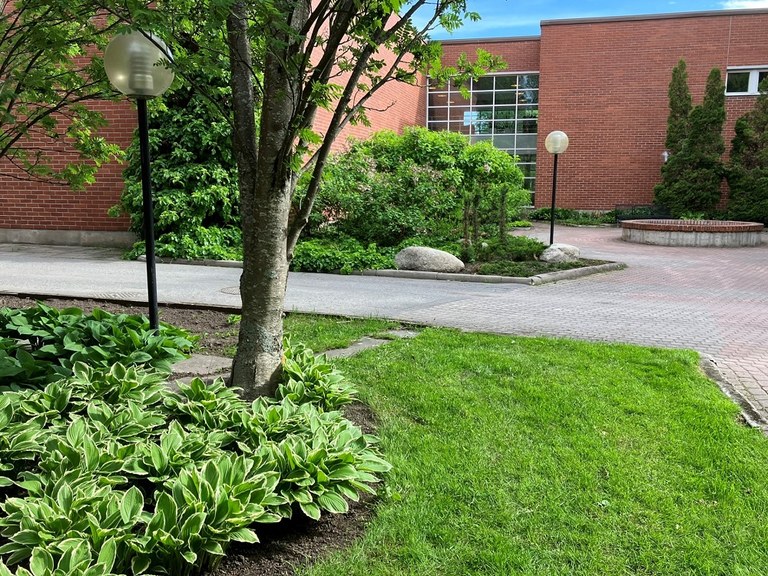
In total, the park has approximately 250 different plant species and varieties. Along the pathways leading towards Lake Jyväsjärvi, groups of deciduous and conifer trees have been freely planted. These include Siberian firs, Serbian spruces, lindens and rowans. Around the middle of the spacious field, the home rowans of the SILMU project (Finnish Research Programme on Climate Change, 1990-95) for phenological research were planted. The plants growing on the noise barrier wall include Norway and Amur maple, blue-berried honeysuckle, elm-leaved spirea, and alpine currant. At the most southwestern point and along the pedestrian and cycle route, dogwoods, willows, and false spiraea have been planted. Around the walls, there are low conifer plants and bushes, stonecrops, and creeping phlox.
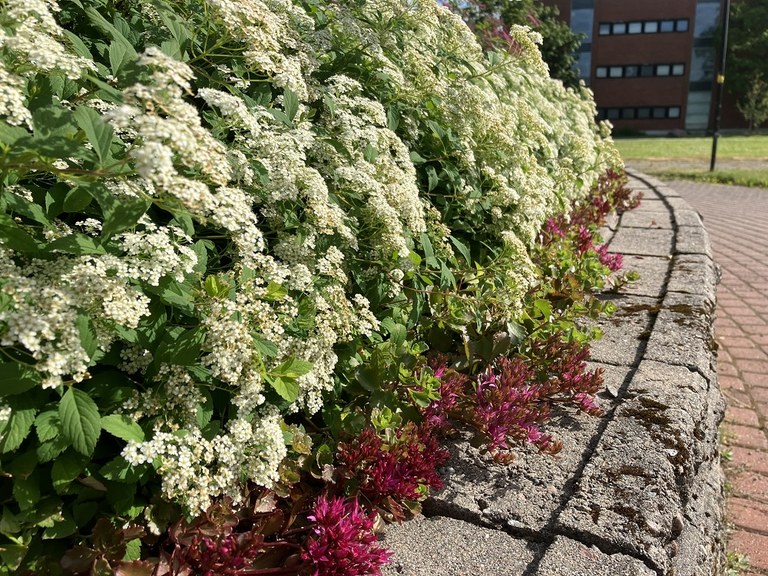

On the noise barrier side of Buildings A and B, there is a large collection of big perennials, such as ornamental rheums, various knotweed species (Polygonaceae) as well as goatsbeard and rodgersia.
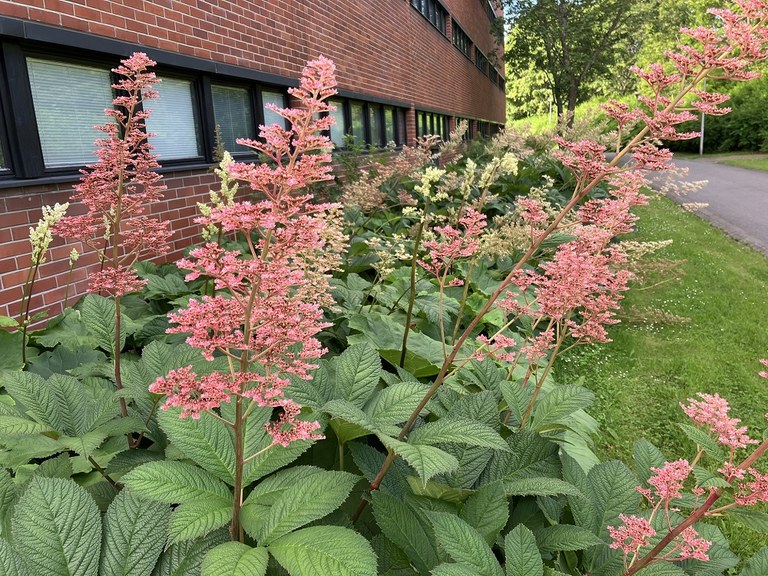
The sheltered inner courtyard encompasses a fountain with rich plantings: junipers, white cedars, hydrangea, clematis, and Dutchman’s-pipe. Along the inner court pathways, there is also a large collection of hostas and ligularia. For example, more than 20 varieties of liguaria have originally grown in this area, accompanied by an even slightly larger number of hosta varieties. A site survey will be performed in this area in the near future (from 2022 onwards).
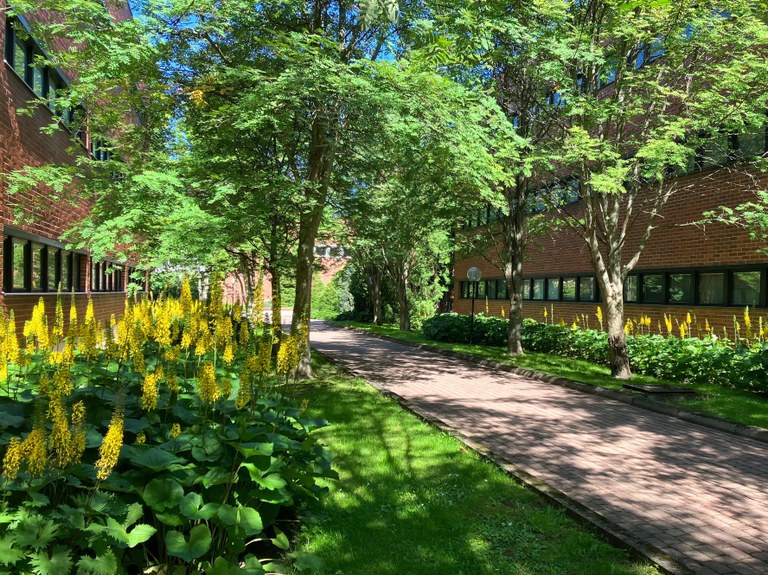
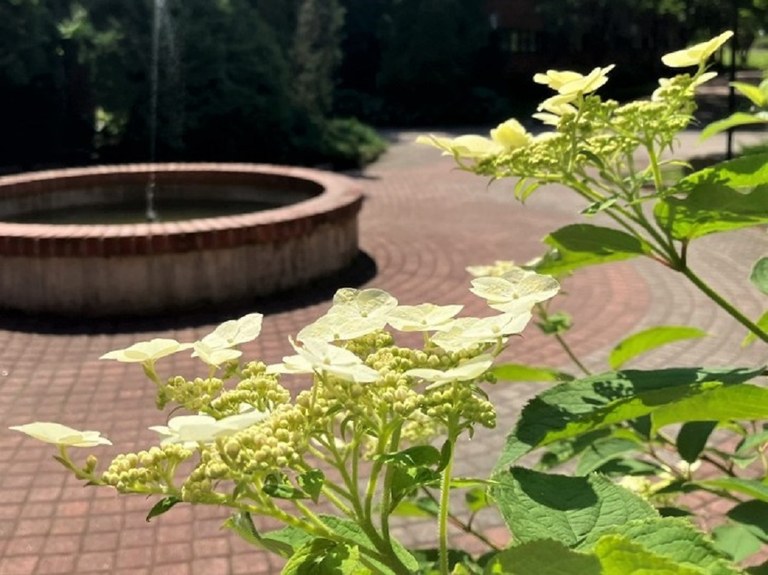
On the north side, there are oaks, lindens, various honeysuckles and mock oranges as well as the perennial daylilies and Astilbe. On the green strips of the parking space on the street side, the plants include maples, chokeberry, and blue-berried honeysuckle as well as various hostas next to the building. The plants in the inner courtyard on the north side include, for example, a boxelder maple, walnuts, a red ash, and honeysuckles.
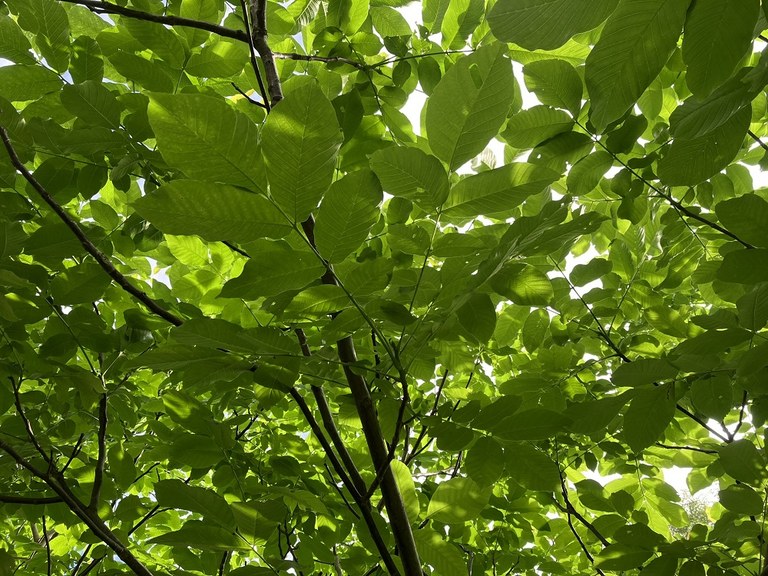
In recent years, the large lawn areas of Mattilanniemi have been enriched with meadow and deadwood garden areas to increase biodiversity (read more: Biodiversity on campus).
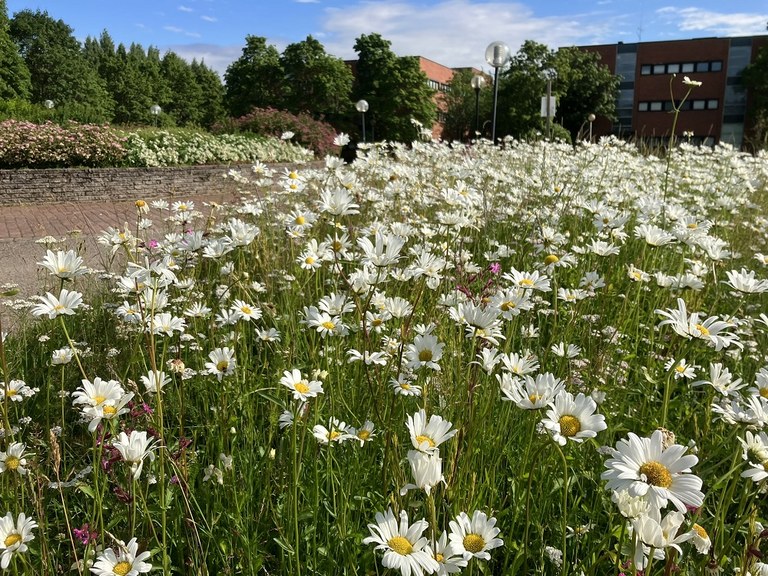
Domestic grove plants on Ylistönrinne
The park-like Ylistönrinne campus represents the garden style of the 1990s and the use of natural Finnish vegetation in landscaping. The first plantings in the area were made in summer 1991 according to the plan by Juhani Rajala, whereas the plantings surrounding the buildings have been designed by Architect Office Sipinen. The group of buildings is lined along the south with a grove wood in its natural state. Part of the grove is protected as a conservation area, which provides a habitat for numerous butterflies and a rare local mollusc species, a snail named Clausilia dubia.
In the courtyard of the Department of Chemistry, you can find various domestic trees such as spruces, wych and European white elms, small-leaved lindens, oaks, and birches. In the central area shaded by the buildings, the plantings include various grove plants, and next to the Department of Biological and Environmental Science there are small-leaved lindens, silver birches, European fly honeysuckles and buckthorns. The lawns are decorated with moss-growing boulders and various ferns or ground-covering plants around them. A specialty of the northern hillside at Ylistönrinne consists of handsome curly birches, bay willows, and more unusual varieties of the familiar spruce, such as Picea abies f. variegata and Picea abies f. aurea 'Kulta-Lumikki'.
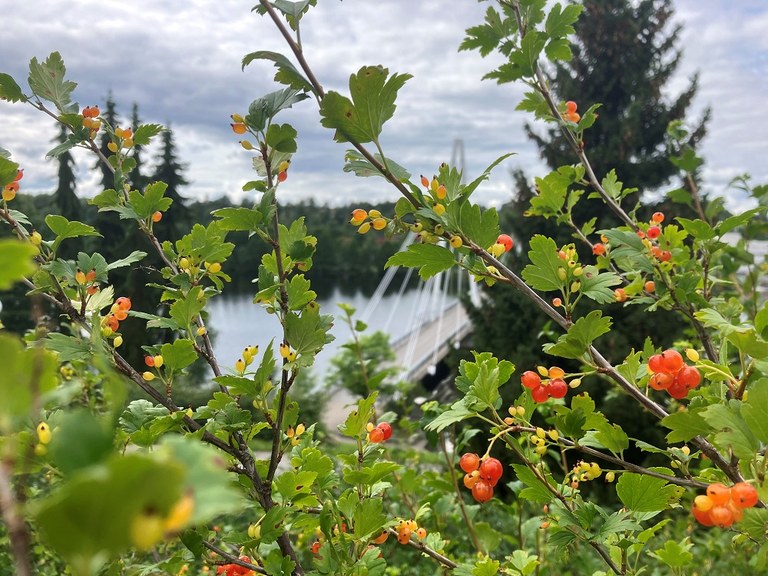
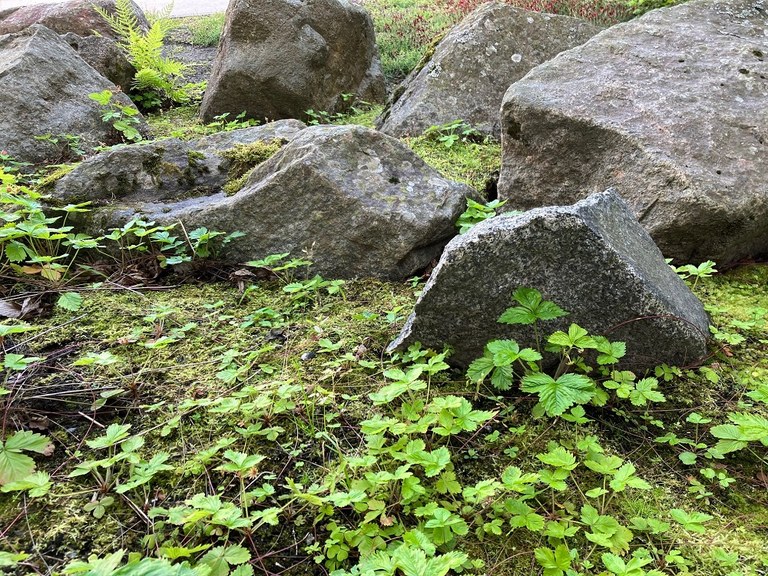
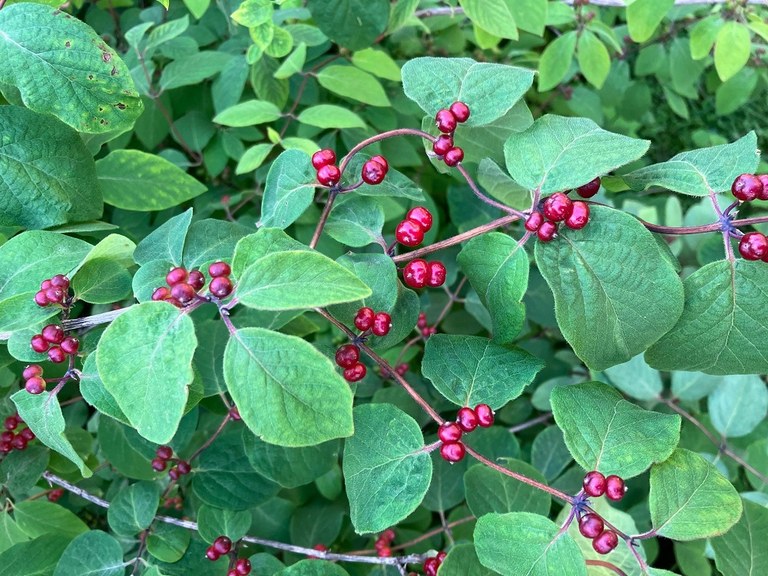
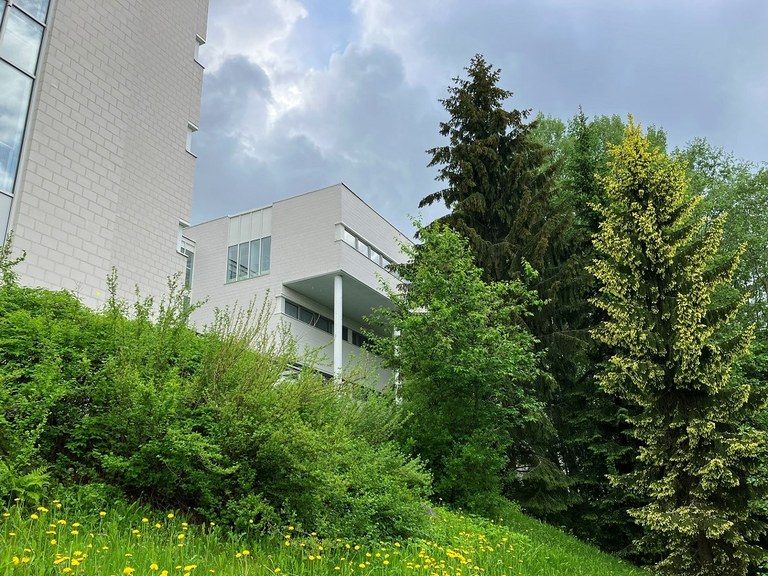
At an early stage, however, the plantings of the garden were overshadowed by the area under construction. The planting areas have diminished considerably, and a great share of the plantings had to give way to new buildings. Therefore, the original diverse plan for the area with its natural vegetation has been simplified and the collections of the Botanical Garden have been replaced with buildings. However, the selection of plants has remained mostly within the domestic wild species and new areas of these plants have been added to during recent years (2023-24). There are also new meadows being created around the Ylistönrinne campus.
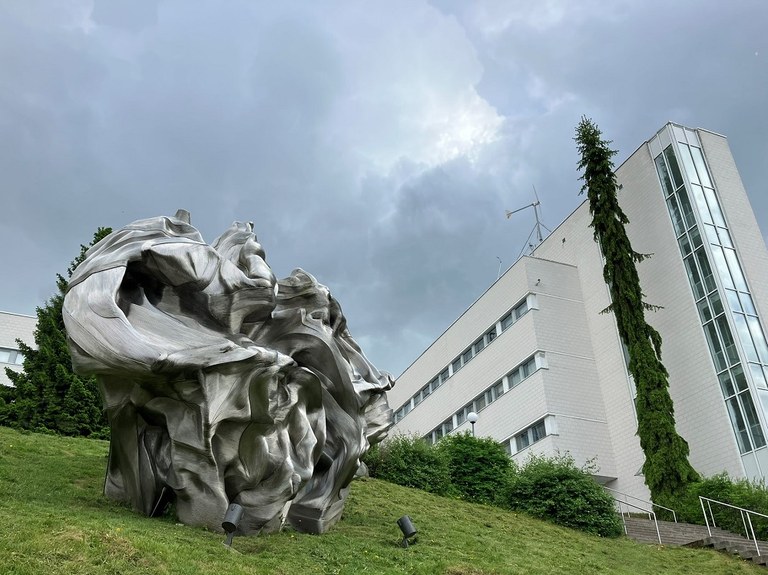
What remains from the overall plans for wild species plantings is basically the grove planting in the shadow of Building YO (YO-YK-YS). The wild plants growing there include different ferns, lilies of the valley, baneberries, speedwells, some purple loosestrife and cowslip shaded by wych and European white elms, junipers and large hazels, on beautiful moss-covered ground. Some deadwood has also been added to the planting site to promote biodiversity in the area (read more about deadwood gardens on campus here). The area also features wild cinnamon rose, buckthorns and a European crab-apple as well as domestic junipers.
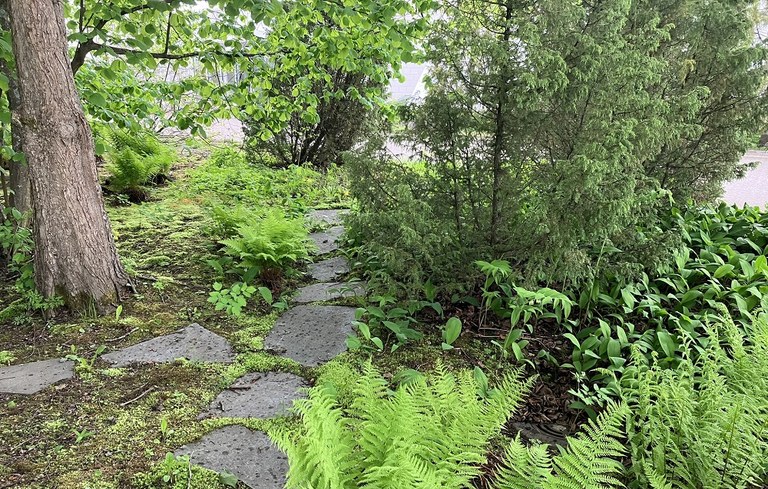
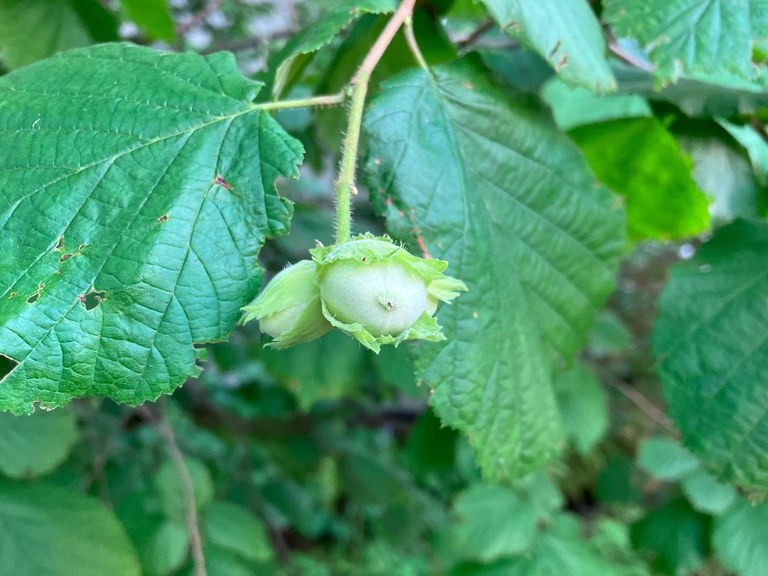
WELCOME TO THE JYU BOTANICAL GARDEN!
The outdoor areas are open for everyone at all times, and you can find plant name plates especially on Seminaarinmäki and in Aalto Park.
View or print a map from here for a self-guided tour in the Seminaarinmäki garden.
Starting address: Seminaarinkatu 15, 40100 Jyväskylä.
